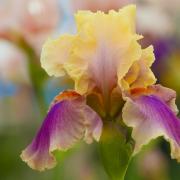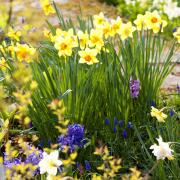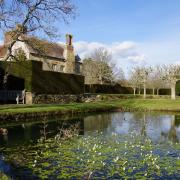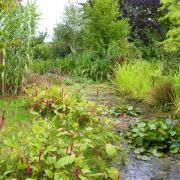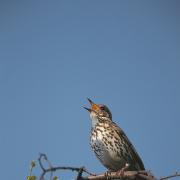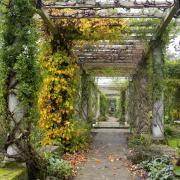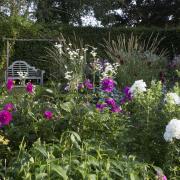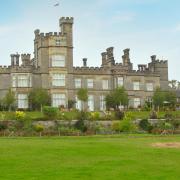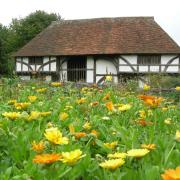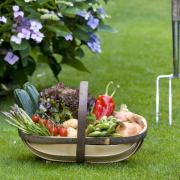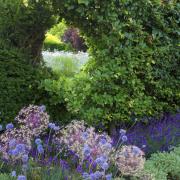This month we’re celebrating these powerhouses of stored energy with advice from Standen head gardener James Masters

Spring-flowering bulbs give a reliable and colourful display with minimum effort required, so are well worth the investment. Easy to grow and resilient, most will naturalise over time and pop up unaided year after year. Whether you are aiming for a carpet under deciduous trees, massed displays in borders or a container by the door, make room for bulbs. Now is the time to look at displays and decide what bulbs you would like to add to your garden. Autumn is the ideal time to start planting while the soil is still warm, finishing in early December. From early blooming snowdrops, winter aconites and crocuses, through snowflakes, scillas, muscari, fritillaries, hyacinths and narcissi, to tulips, alliums, and camassias, you can have bulbs flowering from January to May.
The end of April into May sees the most showy of them all, the tulip, take centre stage. Their sheer range of dazzling luminous colours makes them arguably the most popular of all the bulbs. Originally cultivated in Turkey for the sultan, they were once the most prized flowers in the world. In the early 1700s the Turks held what was probably the first tulip festival when, by the light of a full moon, they displayed hundreds of beautiful vases of tulips in gardens lit by crystal lanterns, with aviaries filled with nightingales and canaries – even the guests were required to wear colours that harmonised with the flowers.
Passion for the flowers spread further when they were imported into Holland in the 16th century and became so popular that they created the first economic bubble, known as Tulipomania, when people paid outrageous amounts of money for the bulbs, causing the market to crash. At the height of tulip fever, a single bulb could be sold for the price of a house.
Fortunately tulips are now available to all in their vast array and one place to really get an idea of their potential impact is at Standen near East Grinstead where they have made a return this year as part of the colourful floral display. The 12-acre garden of the National Trust’s Standen estate, originally owned by James Beale, and his wife, the passionate plantswoman Margaret Beale, is a true highlight in spring and bursting with colour. The display focuses on a variety of spring blooms with 22,000 bulbs planted at the end of last year by dedicated National Trust staff and volunteers, including snowdrops, crocus, daffodils, lilies and cyclamen.

Head gardener James Masters explains: “In the main parts of the garden around the house, we have kept the bulbs from last year, including tulips and hyacinths, and planted over these with almost 10,000 winter bedding plants including pansies, wallflowers, daisies and forget-me-nots. There is a large display of tulips in the croquet lawn border, underplanted with forget-me-nots, as well as in the house and lower terraces, house courtyard, lavender lawn and kitchen garden, plus several pots of them as well.”
James’ favourite tulips include the early-flowering kaufmanniana, which is ideal for edging beds and borders; ‘Honeymoon’, a lovely white frilly variety that fits in well with other spring flowers; and ‘Abu Hassan’, a Triumph tulip with yellow-edged red flowers that looks incredible backlit by the sun.
Growing tulips is not without its challenges – the wet weather since last summer has not been ideal. “Unfortunately, because we have grown tulips in the same ground for many years, we are beginning to suffer from tulip fire – a virus that eventually kills the whole plant,” explains James. “Many of the tulips we do have, however, should last for several years and some of the earlier and species types are naturalising and spreading. We have also put in the spring bedding plants which add to the colour, provide a foil for the bulbs above, and their foliage prevents rain splashing mud onto the flowers of the bulbs,” he says.
This year’s spring planting has also ventured further out into the garden, with planted areas of bulbs including the farm track, rosary and hydrangea path, many of which will spread year after year giving spring colour for a long time to come. Margaret Beale’s example of planting many bedding plants and bulbs, particularly during the 1920s, has inspired the schemes and her passion resonates through the staff and volunteers who are continuing the tradition.

With the completion of the extensive revival project of this important Arts and Crafts garden, which began in 2012, this is truly a special garden to visit throughout the year and a perfect accompaniment to the house, itself a monument to the combined genius of architect Philip Webb and his friend William Morris.




